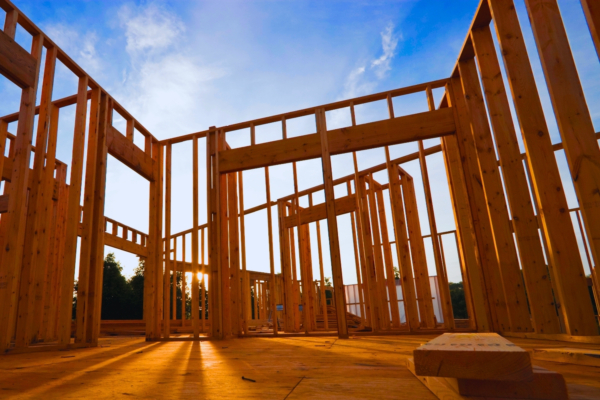
How to Buy a Multifamily Property
If you are searching the real estate market for a new home or hoping to make a real estate investment, you may be curious about purchasing a multifamily property. While the price tag might seem a little steeper than other investments, buying a multifamily investment property has many benefits–the primary one being the ability to generate a recurring passive income. Read on to find out how to buy a multifamily property.
Advantages of buying a multifamily property
- Recurring income: Probably the biggest benefit of buying a multifamily property is the ability to have a recurring monthly income. With single family properties, a good portion of your income will go to covering the mortgage. A multifamily property, on the other hand, puts more money in your pocket after covering all expenses.
- Diversified income: If you rent out a single home property, and the tenant decides to vacate, you could be put in a bad position. If a unit in a multifamily property is vacated, you can still count on the income from the other units, which helps to alleviate the loss from a vacancy.
- Lower maintenance: When repairs are needed, such as roofing or heating repairs, they can be made to all the units in the property at once. This results in a lot of time and money savings. In addition, because of the increased income, there is more justification to hire a property manager to handle day-to-day operations and oversee necessary repairs. This allows you, as the investor, to be less involved.
- Additional opportunities for income streams: Beyond charging rent, you can produce an income from multiple sources. You can charge for parking, garage spaces, laundry, and other amenities to produce income beyond rent.
- Tax benefits: There are many tax benefits for those who invest in multifamily homes. For example, investors can use the depreciation of the property to offset a good portion of the rental income they generate from the property each year.
- Performance-based financing: Because multifamily properties have good income-generating potential, lenders focus less on the investor’s personal finances. This is helpful for those who want to invest in real estate but don’t have a great credit score.
What to look for when considering multifamily properties
- Location: There are many factors that you should take into account when looking at properties, including school ratings, public parking availability, nearby attractions, public transit options, nearby businesses, and overall condition of the area. In addition, you want to invest in a property located in an area with high growth potential, so the value of your property increases over time.
- Number of units: There are two types of multifamily properties to consider: residential (two to four units) or commercial (five or more units). The size of the property has a lot to do with both risk and affordability.
- Income potential: You want to be conservative when estimating the potential income of a multifamily property. A good rule of thumb is to anticipate that the annual cost of your expenses will be 50% of the gross income of the property- and this does not include mortgage expenses. For example, if your property generates $36,000 a year in gross rents, you can expect that $18,000 of that amount will be needed to cover expenses.
Financing options for a multifamily property
- Credit Unions and Banks: Depending on the number of units, most financial institutions that provide conventional mortgages can offer loans large enough for a multifamily property. A conventional mortgage loan would only be available for properties with four units or less, and a commercial loan would be needed for anything with five or more units.
- Government-backed loans: Government agencies like the Federal Housing Administration (FHA), Fannie Mae, and Freddie Mac offer programs for multifamily property loans. They also offer loans for five or more units, with a minimum loan amount of $1 million.
- Private lenders: If you don’t have sufficient funds for a down payment, a private lender is an option. A private lender could include a private mortgage lender, friends, family, and other sources.
- Equity shares: With an equity share investor, you give them a portion of the equity of the property in exchange for the funds needed for a down payment. This usually means two parties buying a home together as co-owners. At the end of an agreed-upon term, one party either buys the other out, or they sell the property and split the equity.
- Real estate crowdfunding: This approach is a lot like raising a round of capital for a startup business–you ask a pool of investors for a small amount of capital each, rather than having one lender who makes a big investment. Real estate crowdfunding generally involves higher interest rates.
How to close on a multifamily property
Once you’ve decided to invest in a multifamily property and have found one that you like, it’s time to begin the purchasing process. Here are the steps you need to follow to be successful.
Keep in mind that the interest rates may change before they are officially locked in.”
Get a pre-approval letter
Once you find a lender, you will need to provide some preliminary financial information to be pre-approved. The lender will provide a pre-approval letter, which states the loan amount that you qualify for, and gives you an idea of what the interest rates will be. Keep in mind that the interest rates may change before they are officially locked in. You typically need a pre-approval letter before you can work with a real estate agent or make an offer on a property.
The information needed for a pre-approval letter will include:
- Your credit score
- 2-3 months of bank statements
- Employment history
- 2 years of tax returns or pay stubs
Set your budget
There are a handful of costs to consider as you set your budget for your multifamily housing purchase:
- Closing costs are generally 2-5% of the price of the property. Closing costs include lender fees, title insurance, property insurance, and property taxes.
- Carrying costs are the monthly costs you will incur, including taxes, insurance, utilities, and mortgage payments.
- Renovation costs are the costs you may need to spend in the instance that the property needs to be fixed up before you rent it out.
- Repair costs are ongoing costs that can arise whenever something needs to be fixed.
Work with a commercial real estate agent.
It is much easier to make a sound financial investment if you work with a real estate agent because they will have a depth of knowledge of multifamily properties, as well as intel on the neighborhood. They can also help you set up showings and negotiate an offer.
Make your offer.
Once you have found a property you want to purchase, you will make an offer. This is where the pre-approval letter comes in, as well as a money deposit. An offer on a multifamily property tends to have more contingencies than a single-family home. During the due diligence period, which is typically 15 days, the buyer will receive the rent roll, tenant payment history, utility bills, and other documents that they can examine before finalizing their offer.
Looking to Purchase Multiple Multifamily Properties?
Our commercial real estate team is standing by!

